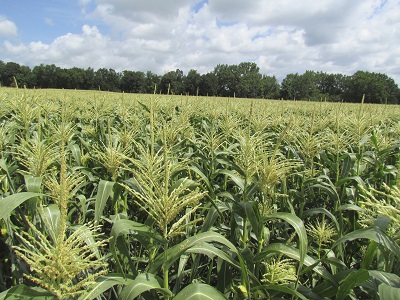June 21 is National Indigenous Peoples Day. We would like to take a moment to honour all Indigenous Peoples and communities impacted by Residential Schools. June 21 is a day for all Canadians to recognize the unique heritage, diverse cultures and outstanding contributions of First Nations, Inuit and Métis peoples. National Indigenous Peoples Day holds special importance this year. We encourage you to participate in the virtual activities that will take place across the country.

The traditional practice by some First Nations of growing different crops together is gaining new ground in conventional agriculture aided by Agriculture and Agri-Food Canada (AAFC) research. Also known as companion planting or intercropping, the practice involves growing two or more types of plants in the same row or field so that the plants can assist each other. This practice yields many potential benefits including increased profits, more efficient use of resources, better soil health, and less reliance on fertilizers and pesticides.
Ancestral know-how
For hundreds of years, various Indigenous groups in North America have intercropped corn, beans, and squash—a combination known as “the Three Sisters”. The corn provides a structure for the beans to climb, the beans provide nitrogen to the soil, and the squash provides ground cover and prevents weeds from establishing.
Researchers from a number of organizations at AAFC, Université Laval and the University of Ottawa worked with collaborators from the Haudenosaunee and Huron-Wendat Nations to learn more about this unique system. This collaborative work with First Nations seed keepers, who are the custodians of post-harvest seeds and plant diversity, helped the team to learn more about this unique practice and its value as a cultivation technique.
Building on this traditional practice, AAFC scientists have found benefits of other crop combinations, including:
- Canola and peas
- Oats and peas
- Chickpeas and flax
- Hazelnut shrubs and berry-producing shrubs, such as sea buckthorn and buffaloberry
In these combinations, the plants help each other in a myriad of ways, such as providing structural support, decreasing weed and disease pressure, and expanding the range of where certain crops are normally grown.
A winning method
The advantages of intercropping are particularly important under organic production where no synthetic fertilizers or pesticides are used. For example, growing a nitrogen-fixing crop with a more commercially competitive species typically results in higher productivity per land area and fewer weeds.
Intercropping with shrubs and trees has proven to be beneficial to agricultural production in other regions of the world but has not been studied extensively in Canada due to a lack of opportunity for agricultural production from shrub and tree species. This cropping system may be particularly adaptable to marginal lands, areas that are hard to farm, and sensitive landscapes by increasing the economic return from these lands and providing additional protection from erosion and degradation.
As AAFC science continues to advance the knowledge on intercropping, it is anticipated that this practice will become more prevalent and will boost profits, plant health, and sustainability—always a winning combination.
Learn more about the incredible benefits of intercropping and how diversifying your crops can promote soil fertility.
Get more Agri-info
- Want more stories like this? Explore what else Agri-info has to offer.
- Interested in reporting on this story? Contact AAFC Media Relations at aafc.mediarelations-relationsmedias.aac@agr.gc.ca to arrange an interview with one of our experts.